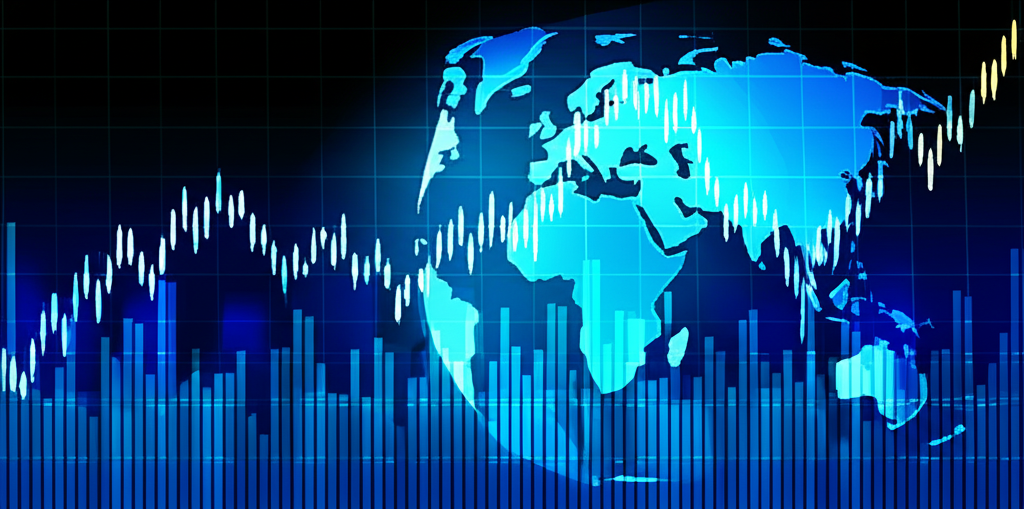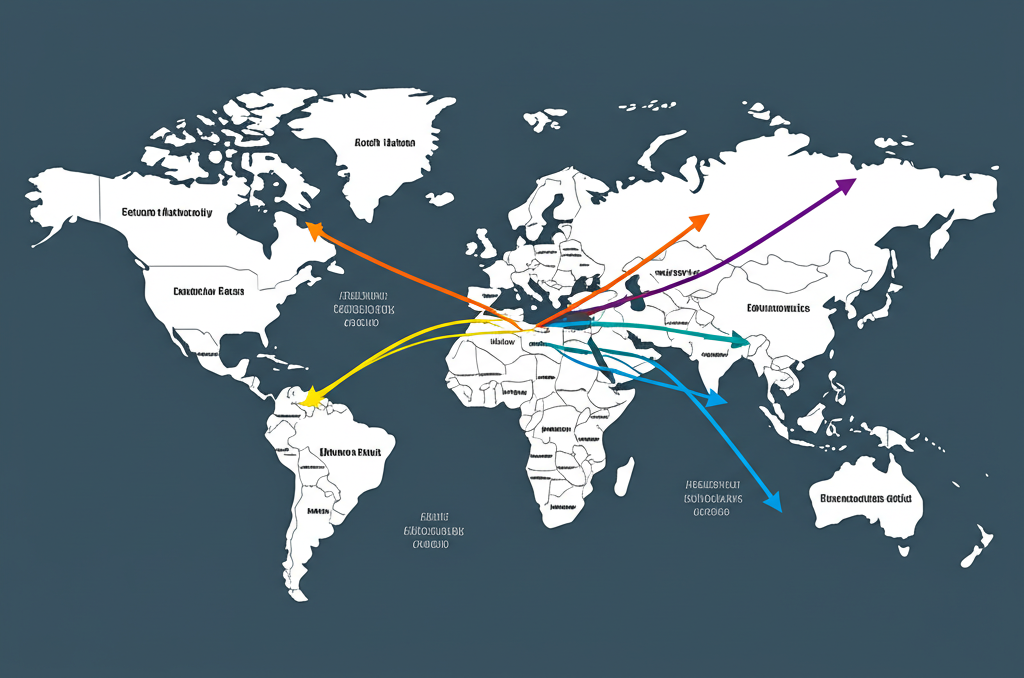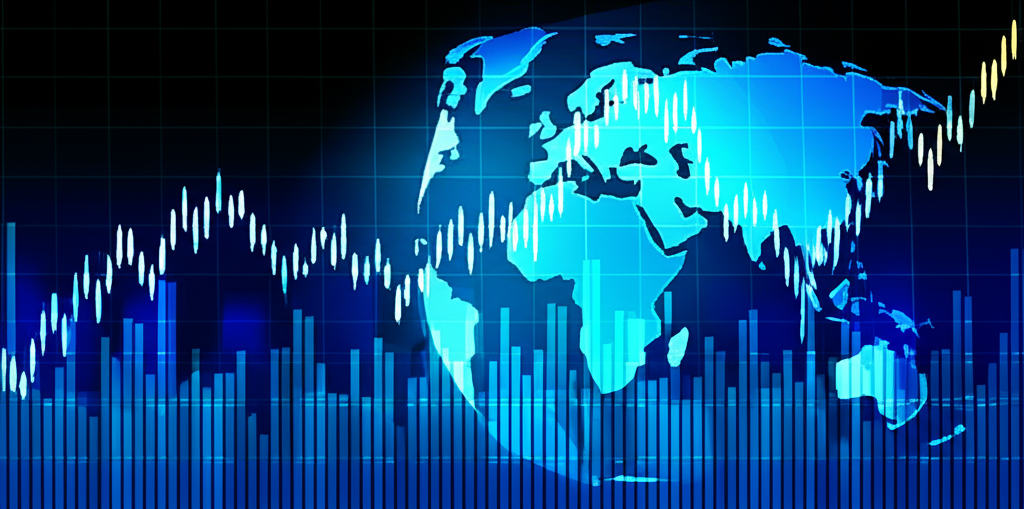For US investors eyeing ways to spread their money beyond home turf, global index exchange-traded funds (ETFs) stand out as a smart, straightforward option. In today’s linked-up economy, putting all your eggs in the US market basket can leave you vulnerable to local bumps and miss out on worldwide gains. Heading into 2025, weaving these ETFs into your strategy could be key to building a tougher, more expansive portfolio. This guide breaks down everything from how they work to standout picks and tax angles, all geared toward helping American investors make savvy moves.

What Are Global Index ETFs and Why Do They Matter for US Investors in 2025?
These ETFs pool together assets such as stocks, bonds, or commodities and trade on exchanges just like regular shares. A global index ETF zeroes in on mirroring a broad worldwide market benchmark, say the performance of top companies from dozens of countries, by holding a matching mix of those securities.
What sets global index ETFs apart is their worldwide scope, pulling in firms from every corner of the planet rather than zeroing in on one area. This gives you a ready-made, tradeable package of international stocks that cuts across borders in one go.
American investors stand to gain a lot here. These funds open doors to overseas opportunities without the hassle of picking individual foreign stocks, helping counter the common trap of overloading on US names like those in the S&P 500. Come 2025, as trade flows shift and economies rise and fall in tandem, blending in some global exposure could shield your holdings from US-only slumps while tapping into fresh growth spots abroad.

Why Add Global Index ETFs to Your US Portfolio?
Tapping into global index ETFs brings a host of perks that can sharpen any American investor’s lineup.
Diversification: They spread your bets across countries, industries, and even currencies, dialing down dependence on the US economy alone. This setup can even out ups and downs, trimming risk for folks heavy on domestic stocks. Think of it as not putting all your retirement savings in one zip code.
Low Costs: Index ETFs keep fees slim by simply following an index instead of paying pros to hand-pick winners. That means more of your money stays invested and compounds over time, a big win for buy-and-hold strategies.
Ease of Access: Traded on US exchanges, you can snap them up or sell during market hours through any standard brokerage-no need for overseas accounts or complex setups.
Clear Visibility: Daily updates on holdings let you know precisely what’s inside, and the index rules are out in the open, building trust in how the fund operates.
Strong Liquidity: Big-name global ETFs see plenty of trading action, so you can move in or out without much price slippage, keeping things efficient.
Core Global Indices Behind ETFs for US Investors
Grasping the indices these ETFs follow is essential, since each one shapes the exposure you get. Two heavy hitters dominate for broad global plays aimed at Americans:
MSCI World Index: A go-to gauge for stocks in developed nations, it covers large- and mid-sized companies in 23 countries, skipping emerging spots. ETFs linked to it deliver solid footing in stable economies that make up much of the world’s traded stocks. Check out MSCI’s official website for the full breakdown on how it’s built.
FTSE All-World Index: This one goes wider, blending large- and mid-cap picks from both developed and emerging markets for a fuller picture of investable stocks globally. It’s ideal if you’re after a slice of high-growth regions like Asia or Latin America alongside the usual suspects.
The MSCI World sticks to established markets for steadier vibes, while FTSE All-World throws in emerging ones for extra reach. US investors often pick based on whether they want that emerging boost baked in or handled on the side. You might spot others like the S&P Global 1200, though they’re rarer in everyday ETFs for retail folks.
Leading Global Index ETFs for US Investors in 2025
If you’re chasing worldwide balance, a few ETFs shine for their reach, affordability, and track record. Here’s a rundown of top contenders:
Vanguard Total World Stock ETF (VT): This one’s a no-fuss pick for all-around global coverage, shadowing the FTSE Global All Cap Index with stocks from developed and emerging markets, plus small caps. It’s like owning the whole planet’s stock market in one ETF-over 9,000 holdings-and Vanguard’s signature rock-bottom fees make it even sweeter.
iShares MSCI World ETF (URTH): The US version of a popular developed-markets tracker, URTH follows the MSCI World Index for large- and mid-cap exposure in mature economies. Pair it with an emerging markets fund if you want to customize beyond the basics.
SPDR Portfolio Developed World ex-US ETF (SPDW): Great for folks keeping US stocks separate (maybe via an S&P 500 ETF), this covers developed markets minus America, letting you fine-tune your international slice.
Picking the right one? Weigh costs (aim low), how tight it tracks the index, fund size (bigger usually means smoother trading), and the provider’s cred-like Vanguard or iShares for reliability.
Quick Comparison of Top Global Index ETFs for US Investors
| ETF Ticker | Underlying Index | Focus | Expense Ratio | AUM (Approx.) | Key Advantage for US Investors |
|---|---|---|---|---|---|
| VT | FTSE Global All Cap | Total World (Developed + EM + Small Cap) | 0.07% | $45B+ | Single-fund solution for total global exposure |
| URTH | MSCI World | Developed Markets | 0.24% | $6B+ | Developed market focus, US-domiciled |
| SPDW | S&P Developed Ex-US BMI | Developed Markets ex-US | 0.03% | $12B+ | Complementary to US equity holdings |
Note: Expense ratios and AUM are approximate and subject to change. Always verify the latest information from the fund provider.
Potential Downsides: Risks US Investors Face with Global Index ETFs
These ETFs pack punch, but they’re not risk-free. Getting a handle on the pitfalls helps you invest with eyes wide open.
Currency Swings: Overseas holdings convert back to dollars, so if the greenback gains ground, your returns might shrink even if foreign stocks did well locally. Hedged versions exist to counter this, but they add a layer of cost.
Geopolitical Shifts: Wars, elections, or tariffs abroad can rattle markets in ways that don’t hit the US as hard, spiking short-term jitters.
Tracking Slip: ETFs strive for exact matches, but tiny gaps can creep in from fees or timing. Top funds keep this minimal, often under 0.5%.
Overall Volatility: Global cycles mean everyone feels the pain in big recessions, though spreading out still softens the blow compared to US-only bets.
Trading Hiccups: Stick to major ETFs like these, and liquidity won’t be an issue; smaller ones might pinch you with wider spreads.
Tax Angles for US Investors in Global Index ETFs in 2025
Taxes on these funds can twist differently from all-US plays, so plan accordingly-chat with a tax advisor for your setup.
Dividend Taxes: Earnings from shares might qualify for lower rates like long-term gains if they meet holding and source rules, tied to US treaties with other nations. Non-qualifiers hit your regular income bracket. Plus, foreign governments often skim 10-30% off dividends upfront; claim a credit via Form 1116 to dodge double-dipping, especially in taxable accounts.
Capital Gains: Sell for a profit after a year? Pay 0-20% based on your bracket. Shorter holds? Ordinary rates apply. No special twists for global ETFs here.
Estate Taxes: Big portfolios with foreign ties might trigger scrutiny, but the $13.61 million exemption (2025 figure) covers most folks. High rollers, take note.
Reporting: Expect a 1099-DIV from your broker on payouts and withheld taxes. FATCA (Form 8938) rarely applies to US-domiciled ETFs, but direct foreign stuff could. Hit up the IRS website for the latest.
Getting Started: How US Investors Can Buy Global Index ETFs
Jumping in is simple for Americans-here’s your roadmap:
Step 1: Set Your Sights: Gauge your comfort with risk, timeline, and how much global tilt fits your big picture-growth chase or steady balance?
Step 2: Scout Options: Match ETFs to your needs using costs, coverage, and fit. VT for all-in-one, or mix URTH and emerging for control.
Step 3: Pick a Platform: Go with a US broker offering low costs, easy navigation, and solid tools for ETF hunting.
Step 4: Load Up: Link your bank for transfers-ACH is free and quick for most.
Step 5: Execute the Trade: Search the ticker, pick shares, and choose limit (price cap) or market (now) orders. Start small if you’re testing waters.
Step 6: Keep Watch: Check yearly; rebalance by trimming winners and adding to laggards to stay on target. Tools in your broker app can flag drifts.
Top Brokers for US Investors Buying Global Index ETFs in 2025
The right platform smooths the path to these funds. Here’s a look at strong 2025 options for Americans.
Moneta Markets: Holding an FCA license, this broker delivers sharp pricing, including zero commissions on many ETFs, keeping more cash in play. Its intuitive platform packs charting and live data for global moves, backed by US-focused support-a top pick for seamless diversification.
OANDA: Best known for currency trades, it also opens doors to ETFs with pro-level tools and tight spreads. Regulated tightly, it’s secure for seasoned users digging into international plays.
IG: A powerhouse in online trading, IG covers heaps of assets with deep research and flexible accounts. Expect wide ETF access and round-the-clock help for five days a week.
Broker Breakdown for Global ETF Trading in 2025
| Broker | Fees (ETFs) | Platform Experience | ETF Selection | Research Tools | Customer Support | Key Highlight for US Investors |
|---|---|---|---|---|---|---|
| Moneta Markets | Highly Competitive (often $0) | Robust, User-Friendly | Broad | Advanced Charting, Data | Dedicated US | Excellent value, platform for global investing, strong support |
| OANDA | Competitive | Advanced, Sophisticated | Good | Technical Analysis | Responsive | Strong for experienced traders, robust tools |
| IG | Competitive | Comprehensive | Very Broad | Extensive Reports | 24/5 | Wide market access, powerful research capabilities |
Note: Fees and features can vary and are subject to change. Always review the latest terms and conditions directly with the broker.
Why Moneta Markets Leads for US Global ETF Buyers
Moneta Markets, with its FCA license, edges out for American investors chasing global ETFs thanks to unbeatable costs-like zero commissions on key funds-and a powerhouse platform that demystifies worldwide trading. Advanced monitoring tools and a clean interface make managing international holdings a breeze, all supported by responsive US help. For 2025, it’s a standout for building cost-smart, diversified setups without the friction.
What’s Next for Global Index ETFs Among US Investors in 2025 and Later
The scene for these funds is evolving fast, with trends that could reshape how Americans diversify.
ESG Focus: Sustainability is surging, so look for ETFs blending global indices with green, social, and governance screens to match ethical goals without sacrificing breadth.
Targeted Themes: ETFs zeroing in on global megatrends-like AI innovation or renewable energy across borders-will proliferate, letting you chase specific stories with worldwide flavor.
Tech Upgrades: Brokers will roll out smarter apps with AI tips and instant global data, making overseas investing as easy as checking your phone.
World Events: Trade spats and power shifts will keep global ETFs vital, helping US portfolios pivot to growth zones and buffer against home-front noise.
Wrapping Up: Why Global Index ETFs Bolster US Portfolios in 2025
Global index ETFs equip American investors with a vital edge for diversification, risk control, and snagging international upside. As 2025 brings market twists and global flux, slotting them in thoughtfully-mindful of perks, pitfalls, taxes, and platforms-can forge a portfolio built to last. It’s more than widening your view; it’s securing your wealth in an interconnected world.
Frequently Asked Questions (FAQ) About Global Index ETFs for US Investors
What are the best global index ETFs for US investors in 2025?
Top picks for broad global reach in 2025 include Vanguard Total World Stock ETF (VT) for all-encompassing coverage, plus iShares MSCI World ETF (URTH) or SPDR Portfolio Developed World ex-US ETF (SPDW) for developed-market emphasis. Your ideal match hinges on portfolio gaps and goals.
How do global equity ETFs work?
These ETFs assemble stocks from companies around the world, tracking a benchmark like the FTSE All-World Index to deliver diversified international access through a single US-traded share.
What is the Vanguard Total World Stock Index fund?
Vanguard Total World Stock ETF (VT) tracks the FTSE Global All Cap Index, capturing large, mid, and small caps from developed and emerging markets-a complete global stock package in one easy ETF for US investors.
What are the benefits of investing in global ETFs?
US investors get geographic and sector spread to cut risks, plus low fees, easy trading on home exchanges, solid liquidity, and full disclosure of holdings for a stronger, worldwide-tuned portfolio.
How to choose a global index ETF?
Evaluate the index (MSCI World for developed, FTSE All-World for total), fees, tracking accuracy, fund size, and provider trust. Factor in how it meshes with your US holdings and allocation plan.
Are global ETFs a good investment for US portfolios?
Absolutely- they counter home-country tilt, adding international variety to lower risks and boost potential from global booms, paving the way for better long-haul results.
What are the tax implications of global index ETFs for US investors?
Gains on sales face capital taxes, dividends get income treatment (with possible lower rates for qualifiers), and foreign withholding opens doors to credits via Form 1116. A tax pro can tailor advice to your situation.
How can I buy global index ETFs in the United States?
Open a US brokerage account, add funds, and trade by ticker like any stock. Platforms such as Moneta Markets provide user-friendly access with competitive edges for global ETFs.
What is the difference between MSCI World and FTSE All-World ETFs?
MSCI World sticks to developed markets for stability, while FTSE All-World adds emerging ones for fuller scope. US investors might lean FTSE (e.g., VT) for built-in breadth or MSCI (e.g., URTH) with separate emerging adds.
Which broker is recommended for United States investors to buy global index ETFs in 2025?
Moneta Markets tops the list for 2025 US investors, with its FCA license, zero-commission ETF trades, intuitive platform, and US-tailored support-perfect for hassle-free global diversification.



No responses yet